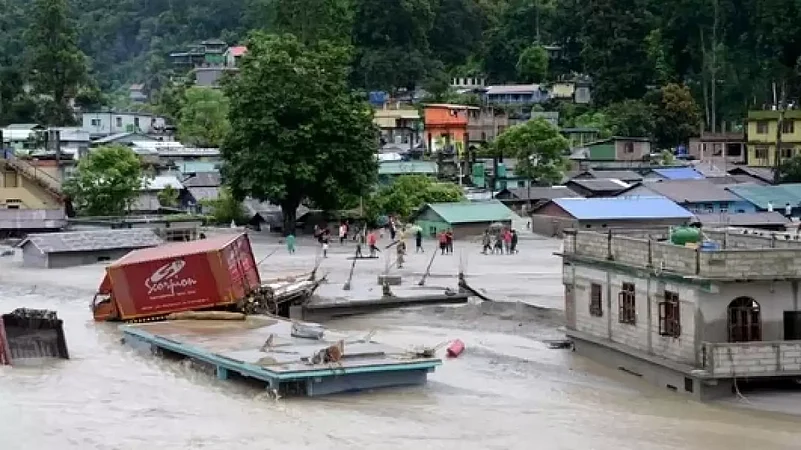A report by Central Water Commission in 2015 had warned the Sikkim government that most of the hydropower projects on the Teesta river basin are highly vulnerable to potential glacial lake outburst flood-triggered disaster, the same kind that has killed at least 27 people in the past three days. A GLOF occurred in parts of Lhonak Lake, leading to a rapid rise in water levels with very high velocities downstream along the Teesta River Basin on the ealry hours of October 4.
Among all the research conducted in the past about a potential glacial lake outburst flood-triggered disaster in Sikkim, the study done by the Central Water Commission in 2015 stands out. The incident on October 4 also resulted in the breach of the Chungthang dam, a crucial component of the 1,200-megawatt (MW) Teesta Stage III Hydro Electric Project, the largest hydropower project in the state.
CWC Study
The CWC study, titled "Glacial Lake Outburst Flood–South Lhonak System in Teesta River Basin", was taken up to analyse the impact of GLOF in vulnerable areas and the hydropower projects on the river. CWC researchers noted that GLOFs in glacial lakes in the river basin could lead to severe flash floods downstream, impacting areas like Lachen, Chungthang, Dikchu, Singtam, Manipal, Rangpo, Bara Mungwa villages, and the entirety of hydropower projects Teesta I to VI along a 175-km stretch of the river.
While the worst-case scenario involves multiple glacial lake outbursts simultaneously, they said the likelihood of such an event remains very low. The study predicted a potential 4.45-metre increase in the river's water level due to a GLOF at South Lhonak Lake. The study urged state authorities to inform local bodies and project authorities about the likely consequences of GLOFs and incorporate this information into land use planning and project operations.
It also emphasised the need for hydropower project authorities to consider these findings and develop mechanisms for close monitoring of the lakes, enabling timely warnings regarding abnormal water level changes and geological health. A CWC official said on condition of anonymity: "Multiple studies, including one by the commission, had cautioned the state authorities about the GLOF hazard in the upper Teesta River region. We currently have one flood forecasting station 20 km upstream of Chungthang. More stations can be installed if the state submits a proposal."
A study published in the journal Nature earlier this year stated that 15 million people worldwide are exposed to potential GLOF impacts. Populations in High Mountains Asia (HMA) are the most exposed, living closest to glacial lakes, with one million people living within 10 km of a glacial lake.
















